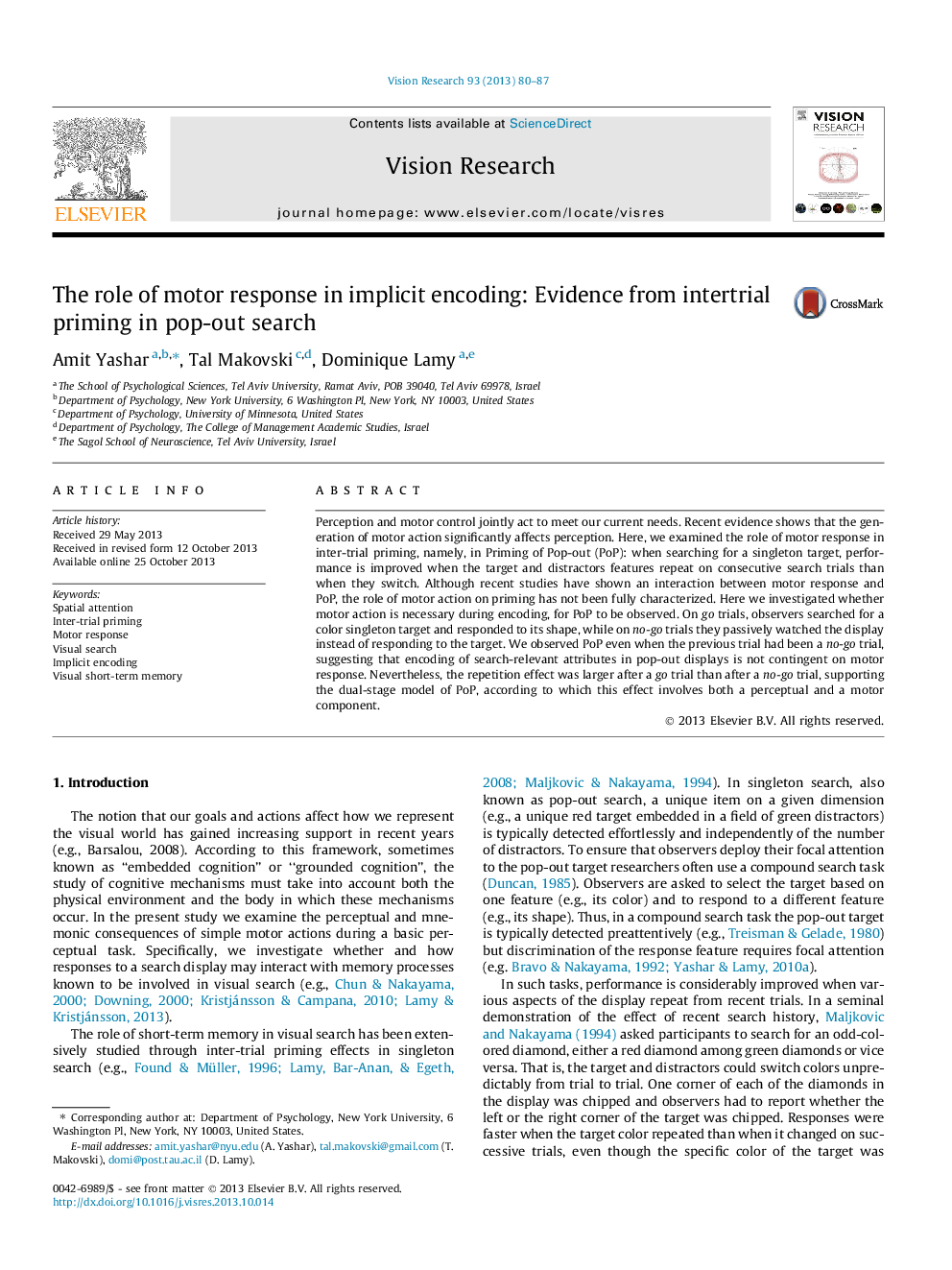| Article ID | Journal | Published Year | Pages | File Type |
|---|---|---|---|---|
| 6203531 | Vision Research | 2013 | 8 Pages |
â¢Go trials were interleaved with no-go-trials in a pop-out search task.â¢PoP was observed even when the previous trial had been a no-go trial.â¢PoP was larger after a go trial than after a no-go trial.â¢PoP affects both attentional allocation and motor response selection.
Perception and motor control jointly act to meet our current needs. Recent evidence shows that the generation of motor action significantly affects perception. Here, we examined the role of motor response in inter-trial priming, namely, in Priming of Pop-out (PoP): when searching for a singleton target, performance is improved when the target and distractors features repeat on consecutive search trials than when they switch. Although recent studies have shown an interaction between motor response and PoP, the role of motor action on priming has not been fully characterized. Here we investigated whether motor action is necessary during encoding, for PoP to be observed. On go trials, observers searched for a color singleton target and responded to its shape, while on no-go trials they passively watched the display instead of responding to the target. We observed PoP even when the previous trial had been a no-go trial, suggesting that encoding of search-relevant attributes in pop-out displays is not contingent on motor response. Nevertheless, the repetition effect was larger after a go trial than after a no-go trial, supporting the dual-stage model of PoP, according to which this effect involves both a perceptual and a motor component.
